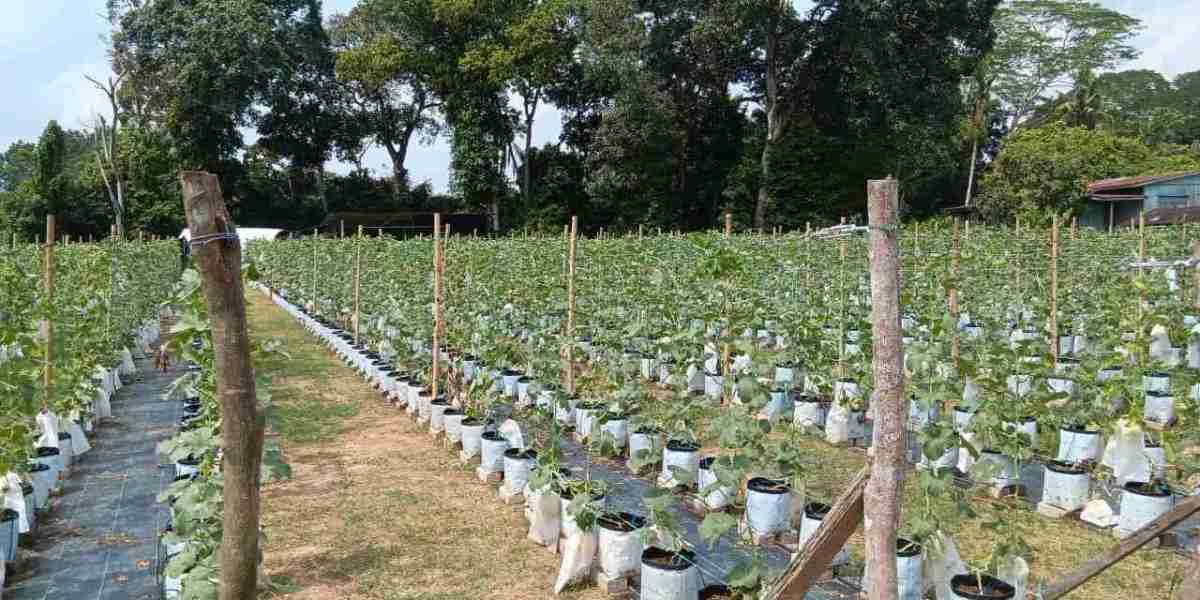Rock melons, also known as cantaloupes, are delicious and nutritious fruits that can be grown in polybags. This method of cultivation is especially popular in areas like Temerloh, where space may be limited or soil conditions may not be optimal for traditional farming. In this article, we will explore the process of rock melon planting in polybags, including the benefits, steps involved, and tips for successful cultivation.
Benefits of Polybag Cultivation for Rock Melons
Polybag cultivation offers several advantages for growing rock melons in Temerloh or any other area:
Space Efficiency: Polybags allow for vertical growth, making it possible to cultivate rock melons in small spaces such as balconies or rooftops. This makes it an ideal method for urban or suburban areas where land availability is limited.
Soil Control: By using polybags, you have complete control over the soil composition, ensuring that it is well-drained, nutrient-rich, and suitable for rock melon growth. This is particularly beneficial in areas where the native soil may be sandy or clayey.
Pest and Disease Management: Polybags provide a barrier against pests and soil-borne diseases, reducing the risk of infestations and infections. This allows for better control over the health and productivity of the rock melon plants.
Steps for Rock Melon Planting in Polybags
Now, let's take a look at the steps involved in planting rock melons in polybags:
Selection of Polybags: Choose high-quality polybags that are at least 18-24 inches in diameter and 12-18 inches deep. Ensure that the polybags have drainage holes at the bottom to prevent waterlogging.
Soil Preparation: Prepare a well-drained potting mix by combining equal parts of garden soil, compost, and cocopeat or perlite. This will provide the necessary nutrients and moisture retention for the rock melon plants.
Seedling Transplantation: Start by germinating rock melon seeds in seed trays or small pots. Once the seedlings have developed 2-3 true leaves, carefully transplant them into the polybags. Handle the seedlings gently to avoid damaging the roots.
Plant Spacing: Maintain a spacing of about 2-3 feet between each rock melon plant to allow for proper air circulation and growth. This will prevent overcrowding and reduce the risk of disease spread.
Watering and Fertilization: Water the rock melon plants regularly, keeping the soil moist but not waterlogged. Fertilize the plants with a balanced organic fertilizer every 2-3 weeks to ensure optimal growth and fruit development.
Trellising and Support: As the rock melon plants grow, provide them with support by installing trellises or stakes. This will help the vines to climb and prevent the fruits from touching the ground, reducing the risk of rot or damage.
Pollination: Rock melons require pollination for fruit set. To encourage pollination, gently shake the plants when they start flowering to release the pollen. Alternatively, you can also use a soft brush to transfer pollen between flowers.
Pest and Disease Management: Monitor the plants regularly for any signs of pests or diseases. If necessary, apply organic pest control measures such as neem oil or insecticidal soap to manage common pests like aphids or spider mites. Remove any infected or diseased plant parts promptly to prevent the spread of diseases.
Tips for Successful Rock Melon Cultivation in Polybags
Here are some additional tips to ensure successful rock melon cultivation in polybags:
Sunlight: Place the polybags in a location that receives at least 6-8 hours of direct sunlight per day. Rock melons thrive in warm and sunny conditions.
Temperature and Humidity: Maintain a temperature range of 70-85°F (21-29°C) for optimal growth. Rock melons prefer moderate humidity levels of around 50-70%.
Pruning: Regularly prune the rock melon plants to remove excessive foliage and redirect energy towards fruit production. This will also improve air circulation and reduce the risk of diseases.
Harvesting: Harvest the rock melons when the skin turns yellow or tan, and the fruit easily detaches from the stem with a gentle twist. The fruit should also have a sweet aroma. Avoid overripe fruits, as they may have a mushy texture.
Conclusion
Planting rock melons in polybags is a practical and rewarding method of cultivation, especially in areas like Temerloh where space may be limited. By following the steps outlined above and implementing the tips provided, you can enjoy a bountiful harvest of sweet and juicy rock melons. Happy planting!
Awalludin Ramlee
421 Articles/Blog posts 🔥







